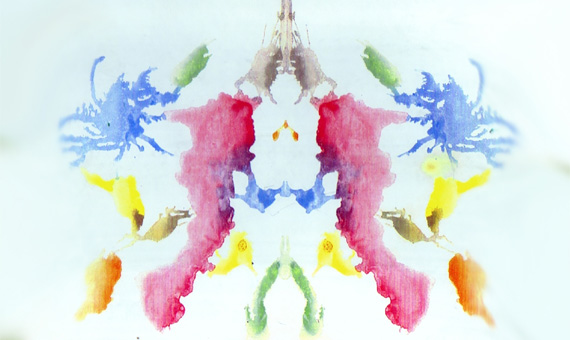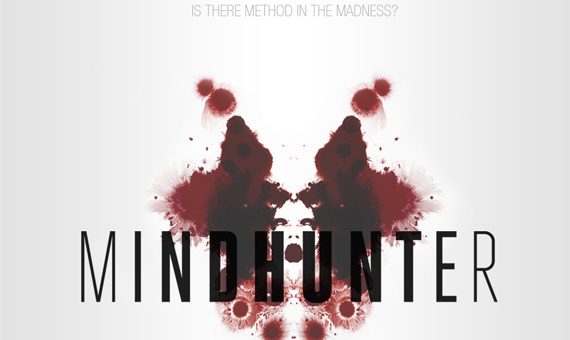On 2 April 1922, a 37-year-old Swiss psychiatrist died on the operating table due to peritonitis. Only nine months earlier, he had published his book Psychodiagnostik, which had barely attracted attention and in which he proposed a series of inkblots figures as a method of mental diagnosis. Nowadays, the test devised by Hermann Rorschach is perhaps the most popular psychological test in the world and has even inspired artists like Andy Warhol. However, a century later the question still persists: is it scientifically sound?
The relationship of Rorschach with the inkblots goes back to his adolescence, when in the fraternity of his school he was known as Klecks, “inkblot” in German. According to the biography of Damion Searls The Inkblots (Simon and Schuster, 2017), this nickname was due to Rorschach’s ability with painting. Years later, during his medical studies in Zurich and greatly influenced by the rise of psychoanalysis, he began to be interested in inkblots, which had been used before as a test of creativity. Now as a psychiatrist, Rorschach began to show them to his patients to study their reactions.

Finally, out of hundreds of figures, Rorschach selected the ten that would be incorporated into his test, chosen for their calculated degree of ambiguity; five of them in black, two in black and red and another three with various colours. The psychiatrist designed his test as a diagnostic method for schizophrenia. However, starting in 1939, it began to be adopted as what was originally called a projective personality test, a type of open psychological test that allows the analyst to investigate hidden emotions and motivations.
Standardization of the test and its results
For decades, the Rorschach test was rarely applied methodically, with variations according to the analyst’s judgment. But in the 1960s, John Exner designed a rigorous methodology to standardize the test and its results. Currently, the test is systematic even in the positions of analyst and subject. And contrary to the popular notion, the key to the test is not just what the subject sees in the blots; in fact, this is less relevant than other aspects, such as their reactions, what they say and how they say it, or which features of the image the viewer focuses on (shape, colour or details).
However, despite the standardization, many psychologists have criticized the validity of the test and the experimenter-dependent variation, in addition to its application beyond its original purpose. Many experts worry about its frequent use in criminal trials, especially considering the tendency of the test to overdiagnose mental disorders, according to critics. The psychologist Pieter Drenth has come to describe the test as “pseudoscientific diagnosis,” while for the psychologist and sceptical researcher Benjamin Radford the test “should be relegated to the pile of once-promising but now-discredited psychological tests.”

For all these reasons, in 1999 the psychologist Howard Garb recommended a moratorium on the use of the test for clinical and forensic purposes until further research determined its real validity, an initiative joined by other experts such as James Wood, Teresa Nezworski and Scott Lilienfeld. In 2003, the four published the book What’s Wrong with the Rorschach? (Jossey-Bass), in which they reviewed more than half a century of use of the test to conclude that its scientific foundations are weak.
In 2013, an extensive study led by psychologist Joni Mihura, from the University of Toledo (USA), gathered scientific reviews and meta-analyses about the test. The conclusions seemed to partially rehabilitate it, at least for its original uses: “The Rorschach is a useful test if used in line with the current research plus the appropriate norms,” summarizes Mihura to OpenMind. According to the expert, “the Rorschach’s forte is in assessing psychosis,” an altered mental state that disconnects the individual from reality and that can be a product of disorders such as schizophrenia. Mihura and his collaborators also developed a new system for using the test, the Rorschach Performance Assessment System (R-PAS), which is applied in several countries.
An open controversy
Mihura’s study led to a partial withdrawal of the petition for a moratorium, says James Wood, of the University of Texas at El Paso, to OpenMind. “We think it is acceptable to use the Rorschach to assess thought disorder or schizophrenia-related symptoms,” always and exclusively according to the current international norms of the system promoted by Exner, says the psychologist. “However, our call for a moratorium is still in effect for other uses and for other forms of the Rorschach.” Thus, Wood and his collaborators disapprove of the use of the test to analyse “non-cognitive aspects of personality, such as traumatic or non-traumatic stress, emotion, depression, anxiety, or personality disorders.” Also, the psychologist argues that there is not enough evidence to justify the use of R-PAS.

The controversy remains open. For Mihura, if any psychologists are using the Rorschach for things that it cannot really measure, the same happens with other tests without sufficient scientific endorsement. The psychologist admits that, for example, “the Rorschach should not be a primary source to determine a depressive diagnosis,” but defends that its legitimate uses are empirically more supported than those of other psychological tests. However, Wood believes that the Rorschach is today “a test of minor importance and limited usefulness.” Even to diagnose the deficit caused by a stroke or a brain injury, a use that some doctors support, Wood points out that there are other more reliable and valid tests.
But in the midst of this debate, voices like Radford’s argue that a test with such shadows of doubt should be abandoned, if the purpose for which it has been used and for which it is moderately valid can be achieved by other methods. As Radford explains to OpenMind, the test is only clearly revealing in extreme cases, and in these not even the specific images of the Rorschach provide anything special; “you could do the same with pictures of clouds,” he says. “People suffering from mental illness deserve evidence-based therapies to help them,” concludes Radford.
Comments on this publication